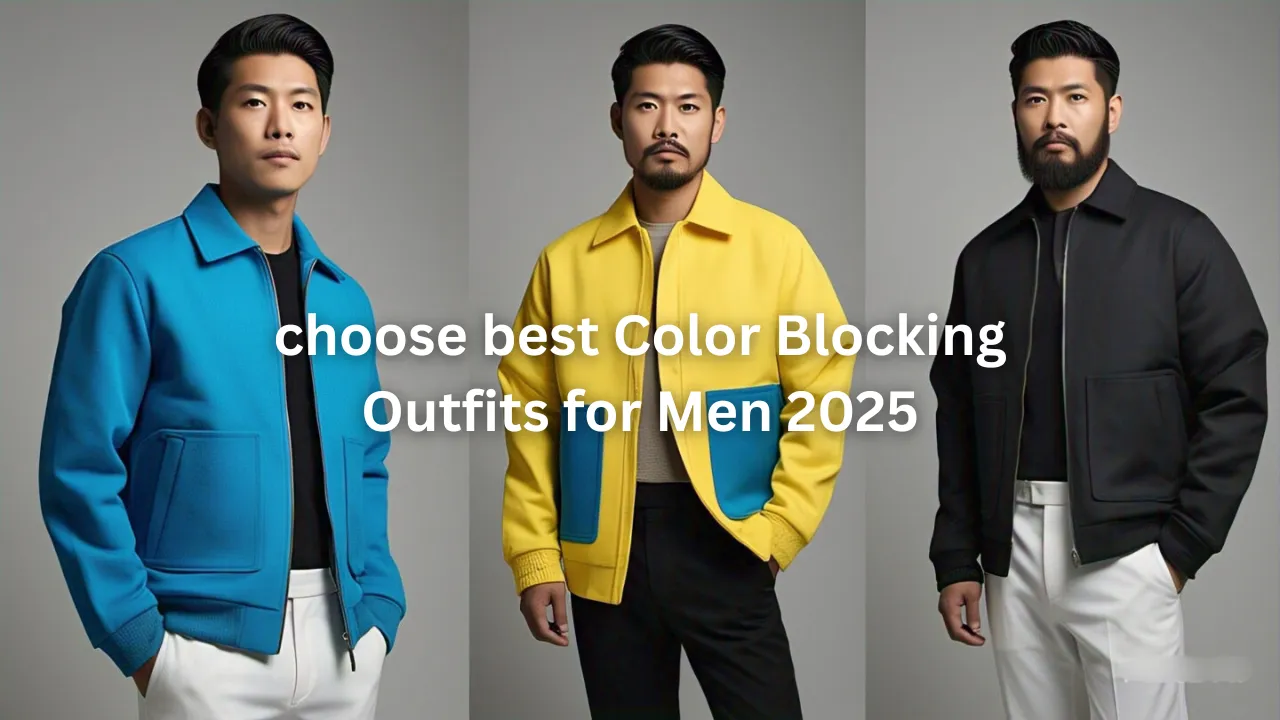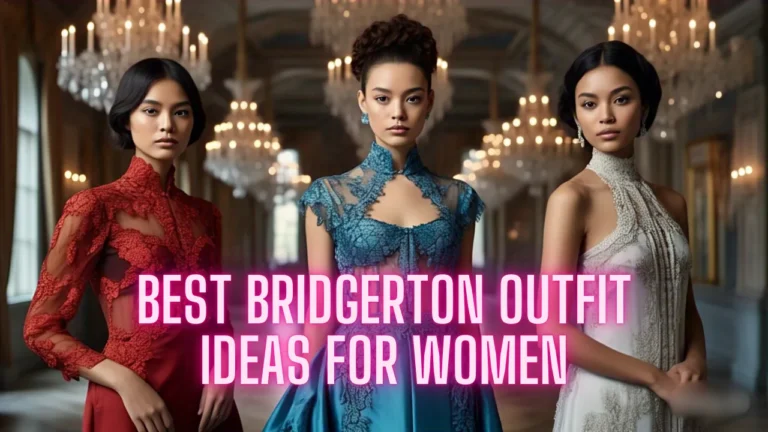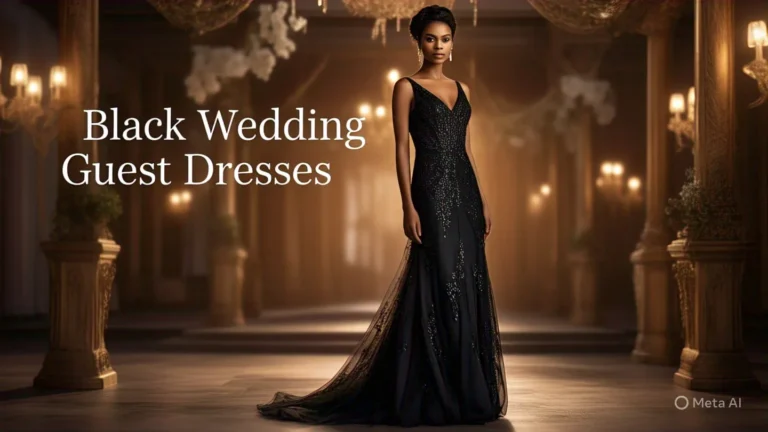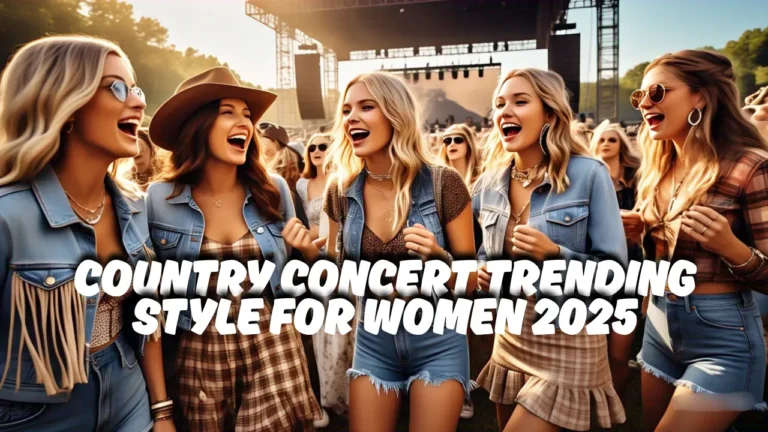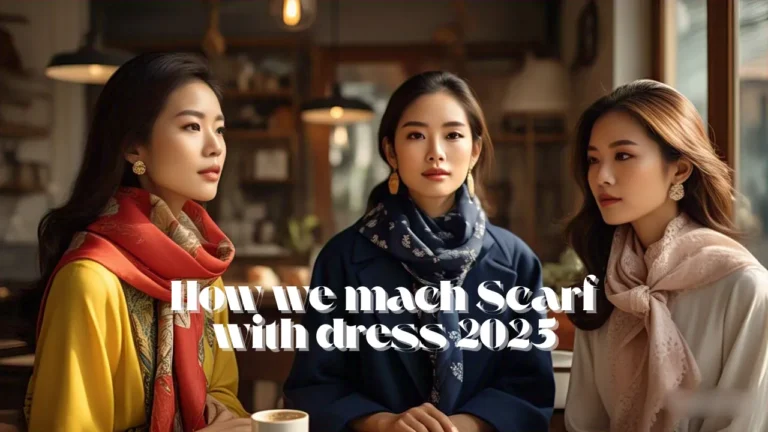choose best Color Blocking Outfits for Men 2025
The Basics of Color Blocking
Color blocking is a dynamic fashion trend that has gained significant popularity in recent years. It involves combining two or more contrasting colors in an outfit, creating bold visual statements. The foundation of successful color blocking lies in understanding color theory—the science behind how colors interact with each other. Colors can be divided into primary, secondary, and tertiary hues, and understanding their relationships helps you mix and match colors effectively.
The key to mastering color blocking outfits is balance. While bold and contrasting colors can be striking, it’s important to avoid overwhelming your look. A simple color-blocked outfit might consist of pairing neutral tones like white or black with vibrant colors such as red, blue, or green. This allows you to make a statement without overcomplicating the outfit.
Primary colors (red, yellow, and blue) are great starting points for color-blocking. They pair well with each other, and using these shades creates a clean, impactful appearance. Additionally, experimenting with secondary colors like orange, green, and purple opens up new opportunities to create vibrant combinations.
Color blocking can also be adapted to fit different styles. Whether you’re creating a casual outfit for everyday wear or a more polished look for a night out, the principles of color blocking remain the same. The trick is to ensure that the colors you choose complement each other and match your personal style.
By learning the basics of color-blocking, you’re well on your way to mastering this fun, bold fashion technique. Keep experimenting with different combinations and trust your instincts to find the perfect balance for your wardrobe.
Visit for More
Best Pearl Nail Art Ideas for Every Style 2025
Raw African Shea Butter Benefits, Best Uses, and Sustainable Practices 2025
How to Effectively Use Color Blocking in Outfits
Mastering color blocking is all about knowing how to pair colors that create a striking yet balanced look. While the idea may seem intimidating at first, understanding the rules of color combinations makes it much easier to experiment with this trend.

One of the first things to consider is your base color. Neutral tones such as black, white, gray, or beige are fantastic choices because they ground your outfit and help highlight the more vibrant, contrasting colors. When combined with bold colors like red, yellow, or green, these neutral tones act as a supporting backdrop, allowing the brighter shades to take center stage. For example, a white shirt paired with green pants or a black jacket with a yellow shirt are perfect ways to start experimenting.
Next, it’s important to balance the intensity of your colors. You don’t want to go overboard with too many contrasting colors in one outfit. A good rule of thumb is to work with two to three colors for a cohesive look. For instance, pairing a red sweater with navy pants and white shoes is a combination that strikes the right balance—bold, but not overwhelming. By limiting the number of colors, your outfit will remain visually appealing and not chaotic.
Another important consideration is the occasion. For casual settings, you can afford to go bolder with color choices. Think of wearing a bright yellow shirt with blue jeans for a fun weekend look. On the other hand, for more formal or semi-formal events, opt for color-blocked outfits with deeper tones and subtler contrasts, such as a navy blue jacket with black trousers and a white shirt. This way, you’re staying stylish without going overboard.
It’s also essential to think about your body type when putting together a color-blocked look. Certain colors can highlight or downplay specific features. For instance, if you want to appear taller, consider using vertical color-blocking with longer color blocks on the upper and lower parts of your body. This can give the illusion of height and elongate your figure. On the flip side, horizontal color blocking can create a broader, more balanced look if you have a lean frame. It’s all about finding the colors and proportions that work for your body.
If you’re just getting started, a simple way to ease into color blocking outfits is through accessories. Think of a color-blocked bag, shoes, or even a hat that introduces the trend without overwhelming your entire outfit. Once you’re comfortable, you can experiment with full-on color-blocked outfits.
Remember, color-blocking isn’t just about looking stylish; it’s also about expressing your personal style and having fun with your wardrobe. So, mix, match, and trust your instincts to create unique looks that reflect your individuality. The more you experiment with color, the easier it will be to perfect this bold fashion statement.
Understanding Color Blocking Fabrics and Textures
When it comes to color blocking, choosing the right fabrics and textures plays a crucial role in enhancing the overall look. It’s not just about pairing colors; the material you select can significantly impact the vibe and feel of your outfit. The combination of colors and fabrics should work together in harmony, creating a seamless visual experience.

1. Choosing the Right Fabric
The fabric you choose can either amplify or tone down the boldness of your color-blocked outfits. Let’s break down some of the most popular fabrics used in color blocking:
- Cotton: Lightweight, breathable, and comfortable, cotton is a great choice for casual color-blocked outfits. It’s easy to wear in the summer, and its natural texture offers a clean and soft look. A cotton t-shirt paired with color-blocked shorts or pants is a great summer outfit for men.
- Denim: Denim, especially in darker washes, can add a structured element to your color-blocking. A denim jacket with a bold-colored shirt underneath is a timeless combo that balances form and function. Denim offers a casual yet slightly edgy vibe, perfect for everyday wear.
- Wool: Wool is a fantastic fabric for color blocking in colder months. It provides warmth and structure, and pairing it with bold hues makes for a chic and sophisticated look. Think of a color-blocked wool sweater with darker tones or a blazer for a more polished ensemble.
- Leather: For a high-fashion, edgy look, color-blocked leather jackets or pants can make a bold statement. Leather gives off a shiny, structured vibe that pairs well with solid, vibrant colors. It’s the ideal fabric for creating a statement outfit that demands attention.
- Knitwear: Soft and cozy, knit fabrics are perfect for adding texture to your color-blocked outfits. A color-blocked sweater in contrasting tones will add a playful yet sophisticated look, particularly during cooler seasons. Knitwear is versatile enough to be worn casually or layered over other outfits.
2. Balancing Textures with Color
While color is the focal point of color blocking, the texture of each fabric also contributes to the overall effect. Mixing different textures can create an interesting, multi-dimensional look.
- Smooth vs. Textured Fabrics: If you’re using a smooth, shiny fabric like silk or satin for one color, pair it with a rougher or more matte fabric like denim or knitwear. This contrast in texture adds depth to the outfit and prevents it from looking flat. For example, pairing a silk shirt with denim jeans creates a balanced, stylish contrast.
- Layering Textures: Layering textured fabrics is another way to enhance your color-blocked look. For instance, a color-blocked leather jacket with a soft knit sweater underneath can create a perfect balance between edgy and cozy. The contrast in materials adds interest and can make the outfit feel more dynamic.
- Sheen and Finish: Fabrics with a natural sheen, like satin or silk, can be paired with matte fabrics like cotton or wool to create a more luxurious appearance. This can also help avoid a “too busy” look, especially if you’re working with bright, bold colors.
3. Using Textures for Specific Styles
- Casual Wear: For casual outfits, a simple color-blocked cotton t-shirt or denim jacket can be paired with jeans or casual trousers. Here, the focus is on comfort and easy styling, with the fabric choice supporting the bold color-blocking without stealing attention.
- Business Casual: For a more professional look, consider color-blocked wool blazers or dress shirts in complementary tones. Keep the textures refined to avoid looking too casual while still embracing the color-blocking trend.
- Evening Wear: For evening outfits, fabrics like satin or silk combined with color-blocked elements can help you create a more refined and stylish look. A color-blocked silk shirt paired with black trousers makes a great option for a night out.
4. Final Thoughts on Fabrics and Textures
Choosing the right fabric for your color-blocked outfits can elevate your style and add a layer of sophistication. Don’t shy away from experimenting with different textures to add depth and interest to your look. Whether you’re using cotton, denim, or leather, the goal is to find a fabric that complements your colors while making you feel confident and comfortable. Mix and match to discover what works best for you, and watch your color-blocking game level up!
How to Style Color Blocked Outfits for Different Occasions
Color blocking can easily be adapted to suit different occasions, making it a versatile style choice. Whether you’re dressing for work, a night out, or a casual weekend, learning how to style color-blocked outfits will ensure you look stylish and confident no matter the setting. Let’s break down how you can use color blocking for a variety of occasions.
1. Casual Day Out
For a casual day out, color blocking offers an excellent way to express your personality while staying comfortable. The goal here is to keep things relaxed yet stylish. Start by pairing a bright color-blocked t-shirt with denim jeans or chinos. For instance, a red and blue color-blocked tee combined with classic blue jeans is a bold yet easygoing look that works well for shopping trips, brunch with friends, or a stroll in the park.
When choosing colors for casual outings, consider pairing primary colors like red, yellow, and blue with neutrals such as white, gray, or black. A gray hoodie with yellow pants creates a casual, playful look, while still keeping things wearable and comfortable. Sneakers or casual shoes pair perfectly with this style, keeping the outfit grounded without taking away from the bold colors.
2. Business Casual
While color-blocking can sometimes be seen as too casual for work, it can be adapted for a business casual look if done thoughtfully. Start with subtle color blocks using darker tones to maintain a professional appearance while still making a statement. A color-blocked blazer featuring deep hues like navy blue and gray is a great way to integrate this trend without looking too informal. Pair it with black trousers or a knee-length skirt for a polished, chic look.
For a more relaxed business environment, you can experiment with color-blocked shirts and sweaters. A white and navy color-blocked sweater over black slacks or dark jeans creates a balanced look that’s both professional and stylish. It’s best to keep the colors muted and neutral so the look doesn’t appear too playful. Consider adding leather shoes or boots to complete the business casual vibe.
3. Evening Wear
Color blocking can also be an attention-grabbing choice for evening wear, but it’s important to opt for more sophisticated color combinations and high-quality fabrics. If you’re heading to a dinner party or a night out, bold color-blocked dresses are a striking option. Think of a black dress with red and gold blocks for a statement-making yet elegant look. This style exudes confidence and gives you the chance to shine without overcomplicating your outfit.
For men, a color-blocked shirt or jacket paired with sleek black trousers can be just the right amount of bold for an evening event. You might even choose dark, rich colors like emerald green, burgundy, or navy blue for a sophisticated take on the trend. A color-blocked suit jacket paired with neutral pants creates a modern yet formal look that’s perfect for an evening out or a fancy dinner.
4. Special Events & Parties
When it comes to special events or parties, color-blocking allows you to play with vibrant hues and create a dramatic effect. For women, a color-blocked maxi dress in bold shades like orange, purple, and blue can make you stand out in a crowd. This vibrant, eye-catching look is perfect for a celebration or a night of dancing.
For men attending a party or special event, consider a color-blocked shirt or t-shirt with graphic patterns. Bright colors, such as a blue and yellow combo, paired with tailored black pants can keep you on-trend while maintaining a sense of fun. Alternatively, a color-blocked jacket can add depth to an outfit without being overly formal.
5. Accessorizing with Color Blocking
In addition to clothes, you can add color-blocking elements through accessories. A color-blocked bag or shoes can instantly elevate a simpler outfit, giving it a modern touch. For example, a color-blocked handbag in shades of red, white, and black can add sophistication to a white shirt and blue jeans combo. Likewise, color-blocked shoes in matching or contrasting tones can tie the entire look together.
If you’re hesitant to go all-in with color-blocking in your clothing, accessories are a great way to dip your toes into the trend without committing to a full outfit. Adding a color-blocked scarf or hat can be a subtle way to incorporate bold colors into your look.
Common Mistakes to Avoid
Color blocking can be a fantastic way to elevate your style, but it can also be tricky if not done right. While the concept is simple—pairing bold colors together—it requires attention to detail to ensure the final look is balanced and visually appealing. Here are some common mistakes people make when color blocking and how to avoid them.
1. Overusing Too Many Colors
One of the biggest mistakes when it comes to color blocking is using too many colors in one outfit. While the concept is about bold, contrasting colors, overloading your look with multiple shades can quickly become chaotic. It’s important to limit the number of colors to create a clean and visually appealing look.
As a rule of thumb, try to stick to two or three colors at most. You can experiment with different combinations, but don’t go overboard. For example, pairing a blue jacket with yellow pants and a red shirt might sound bold, but it could look overwhelming. Instead, opt for a combination like blue and yellow with a neutral base like white or black to balance the outfit.
2. Not Considering Proportions
Another common mistake is not considering the proportions of the color blocks in your outfit. If one color is too large and another is too small, the balance will be off, making the outfit feel disjointed. Ideally, you want your color-blocked elements to be balanced in size.
For instance, if you’re wearing a color-blocked sweater, make sure the sections of the sweater are even in size, with no one color dominating the others. If you have a larger block of one color, balance it with smaller sections of other shades. Similarly, when wearing color-blocked pants, ensure the color sections are proportionate to the overall silhouette of the pants.
3. Ignoring the Occasion
Color blocking is bold and fun, but it’s essential to consider the occasion before choosing an outfit. Just because a color-blocked dress looks great at a casual party doesn’t mean it will work for a formal business meeting. Similarly, pairing neon colors for a work event might make you stand out for the wrong reasons.
Always adapt your color-blocking outfit based on where you’re going. For a business casual look, stick to muted tones like navy blue, gray, or black combined with more subtle hues, rather than going all out with bright neon colors. On the other hand, for a night out or a special occasion, feel free to experiment with bold, vibrant color blocks.
4. Choosing Clashing Colors
While the whole point of color blocking is to mix contrasting colors, choosing colors that clash can ruin the entire look. For example, pairing neon green with bright pink might be a bit too much, especially if the colors aren’t balanced or muted appropriately. It’s best to pair complementary colors or colors that are next to each other on the color wheel to ensure they work together harmoniously.
For example, blue and orange work well because they are complementary colors. If you’re uncertain, start with safe combinations like blue and yellow, green and brown, or purple and gray. Avoid overly bright shades of similar colors, as they can create visual confusion and detract from the impact of color blocking.
5. Not Matching the Textures
When color blocking, texture plays a significant role in how your outfit is perceived. Mixing fabrics with the same texture can create a flat, one-dimensional look, while combining fabrics with contrasting textures can enhance the outfit. Ignoring the texture can make the bold colors look even louder and clashing.
To avoid this, pair smooth fabrics like silk or satin with rougher textures like denim or cotton. For example, a silk color-blocked top paired with denim jeans creates a great balance. Alternatively, a color-blocked knit sweater paired with sleek leather pants can create a stylish contrast, giving the outfit depth.
6. Failing to Incorporate Neutrals
Neutrals play a crucial role in grounding your color-blocked outfits. Without neutrals, your outfit could easily become too overwhelming. For instance, if you’re wearing bold color blocks like red and yellow, balancing the look with a neutral color like white, black, or gray will help keep things in check.
Incorporating neutrals as a base color allows your bold colors to pop without feeling too chaotic. You can use neutral colors for things like jackets, shoes, or accessories. This will help to create a more balanced and aesthetically pleasing look.
7. Not Paying Attention to Fit
Just like any other style, fit is key when it comes to color-blocked outfits. A poorly fitted shirt or ill-fitting pants can make even the most stylish color blocks look sloppy. Always choose clothes that fit well and complement your body shape, regardless of the colors involved.
Ensure your color-blocked items don’t overwhelm your body shape. If you’re on the shorter side, for example, avoid color-blocking with overly long pieces that will visually shorten your frame. For taller individuals, try to experiment with color-blocking on larger clothing pieces to balance proportions.
The Pros and Cons of Color Blocking Outfits
Color blocking is a trendy fashion style that can make a bold statement, but like any style, it comes with its pros and cons. Understanding the advantages and disadvantages can help you decide when and how to incorporate color blocking into your wardrobe.
Pros of Color Blocking
- Instant Statement Look
Color blocking creates an eye-catching, bold statement. When you wear a well-put-together color-blocked outfit, you immediately stand out. The contrast between colors adds drama, making your outfit the focal point of any room. Whether you’re wearing a color-blocked dress or a shirt paired with pants, color blocking is an easy way to make a fashion-forward statement.
- Versatility
One of the best things about color-blocking outfits is their versatility. You can use this style for any occasion—from casual to formal settings. A color-blocked tee can be worn for a weekend outing, while a color-blocked suit can be perfect for work or evening events. You can play with different colors and fabric types to create endless combinations, making it adaptable to any setting.
- Enhances Your Shape
When done correctly, color blocking can highlight and enhance your body shape. By placing certain colors in specific areas, you can create the illusion of a more defined silhouette. For example, darker colors on the sides and lighter shades in the middle can create a slimmer appearance, while bright colors in the right spots can draw attention to your best features. This makes color blocking a great way to emphasize your body shape and feel confident in your look.
- Easy to Style
Even though color-blocking outfits can seem bold, they’re actually quite simple to put together. As long as you stick to the basics of pairing contrasting colors and balancing the proportions, you can easily create stylish outfits without spending too much time figuring out what goes with what. Neutral colors paired with vibrant blocks of color are the easiest combinations to style.
- Modern and Trendy
Color blocking is a timeless trend that continues to be modern and fresh year after year. By incorporating it into your wardrobe, you’re ensuring your outfits remain stylish and relevant. Bold color blocks in suits, dresses, or accessories are all trendy pieces that are bound to make you look fashionable and confident.
Cons of Color Blocking
- Can Be Overwhelming
While color blocking can look striking, it can also be overwhelming if you go too far. Using too many bright colors or choosing shades that clash with each other can create an unbalanced, chaotic look. The key to avoiding this is restraint—stick to two or three colors, and make sure they complement each other. The wrong combination can make your outfit feel visually loud or disconnected.
- Challenging to Pull Off
Not everyone feels comfortable with bold color combinations. If you’re new to color blocking, it may take some time to master the technique and get the balance right. For some, it can feel too daring or out of their comfort zone. It’s essential to experiment and find color-blocked outfits that work with your personality and style preferences.
- Not Always Appropriate for Formal Events
While color blocking works in many casual or semi-formal settings, it might not always be suitable for certain professional environments. Bright, contrasting colors can sometimes seem too casual or too trendy for more conservative workplaces or formal events. In such cases, muted color-blocking with subtle hues can still make the style work, but it’s important to choose the occasion wisely.
- Can Draw Attention to Unwanted Areas
If you’re not careful, color blocking can draw attention to areas of your body that you’d prefer to downplay. For instance, wearing bold, contrasting colors on your waist or hips can draw attention to those areas, even if you’d rather focus on your upper body. Color-blocking strategically—placing darker shades around areas you want to minimize and lighter shades where you want to attract attention—can help you avoid this issue.
- Requires Confidence
Finally, color blocking demands a certain level of confidence. Wearing contrasting colors in such a bold way requires a lot of self-assurance, as it naturally draws attention. If you’re not comfortable with this, it could result in feeling self-conscious rather than empowered. However, once you embrace the style and wear it with confidence, you’ll find it’s a great way to express your personality and style.
How to Style Color-Blocked Outfits for Different Occasions
Color blocking is a versatile style that can be adapted for any occasion, whether you’re heading to the office, a casual day out, or a night on the town. The key to mastering color blocking is knowing how to balance the bold colors with the right outfit details to fit the event. Let’s explore how to style color-blocked outfits for different occasions.
1. Color Blocking for Work
For professional settings, you want to keep your color-blocked outfits sleek and sophisticated. Stick to neutral tones like navy, black, or gray, and pair them with a single bold color to avoid overpowering your outfit. For instance, a color-blocked blouse in navy blue with burgundy accents can be paired with black trousers or a pencil skirt for a chic, office-ready look. Avoid neon or overly bright color combinations for the workplace; instead, choose colors that complement each other for a refined appearance.
A color-blocked dress in soft hues like pastel pink and cream also works well for office meetings or business casual environments. Pair it with classic accessories like a structured bag and pointed-toe shoes to keep things polished.
2. Casual Day Out
For a more laid-back look, you can go bold with your color-blocked outfits. A color-blocked t-shirt or sweatshirt paired with jeans or casual shorts is a perfect choice for a weekend hangout or an afternoon stroll. Opt for bright colors like yellow, blue, or red for a youthful and fun vibe. Pairing these colors with a denim jacket or sneakers helps keep the outfit casual and comfortable.
You can also experiment with color-blocked accessories, such as a color-blocked handbag or shoes. These small pops of color can add interest to a basic outfit without going overboard. A white shirt paired with color-blocked sneakers or a multicolored scarf can be the perfect way to incorporate color blocking into a more relaxed outfit.
3. Night Out
When styling color-blocked outfits for a night out, it’s time to be bold. Bright, contrasting colors like neon green and hot pink can make a daring fashion statement for clubbing or a trendy event. A color-blocked mini dress or a sleek jumpsuit in vivid colors like orange and purple is perfect for showing off your unique style. Keep accessories minimal—go for a black clutch or metallic shoes to let the outfit shine.
Alternatively, if you want a more refined yet still bold look, opt for a color-blocked top paired with high-waisted pants or a skirt. Choose a mix of deep jewel tones, such as emerald green and royal blue, for a luxurious, attention-grabbing style. You can complete this look with statement jewelry to add that extra touch of glamour.
4. Special Events
For special occasions like weddings, galas, or cocktail parties, you can create a sophisticated look with color blocking by choosing rich, muted tones. A color-blocked dress in burgundy and gold is perfect for an elegant evening. To keep the look polished, opt for fabrics like silk, satin, or velvet, which give the outfit a luxurious feel.
Avoid overly bright or clashing colors when attending formal events. Instead, choose color combinations that are complementary, such as navy and ivory or emerald and black. Pair your outfit with elegant heels and fine jewelry to create a refined, stylish appearance suitable for any special event.
FAQs
1. What is color blocking in fashion?
Color blocking is a fashion technique where different solid colors are paired together in one outfit. These colors can be bold or contrasting, creating a striking visual effect. The goal is to break up the outfit into distinct color blocks to make a statement and draw attention to different parts of the body.
2. How do I color block my outfit without looking overdone?
To avoid an overly loud outfit, stick to a maximum of three colors, and make sure they complement each other. Neutral tones, such as black, white, or gray, paired with a bold color like red, yellow, or blue, work well. Additionally, make sure the proportions of the colors are balanced so that no one color overwhelms the outfit.
3. Can I color block if I’m not confident in my fashion choices?
Absolutely! Start with simple, minimal color blocking—such as pairing a color-blocked top with neutral pants or a skirt. This allows you to dip your toes into the trend without feeling too bold. Over time, you can experiment with more striking combinations as you build confidence.
4. What are the best color combinations for color blocking?
Some great color combinations include:
Blue and yellow
Red and white
Black and gold
Pink and green The key is to balance the colors’ intensity, so one doesn’t overpower the other. Experiment with combinations that feel right for your personal style.
5. Can color blocking be worn to formal events?
Yes, color blocking can work for formal events, but it’s important to choose more muted tones for a sophisticated look. A color-blocked dress in rich colors like emerald green and navy blue, paired with elegant accessories, can look stunning for a cocktail party or a formal dinner. Avoid using overly bright colors that could seem too casual.
6. How do I accessorize with color-blocked outfits?
When accessorizing color-blocked outfits, it’s best to keep the accessories simple and neutral. A black handbag, gold jewelry, or a pair of nude heels will complement the bold colors without taking away from the overall look. However, don’t be afraid to add a pop of color with accessories like a color-blocked scarf or bold shoes to emphasize the color-blocking trend.
7. Are there any color blocking tips for plus-size individuals?
Color blocking can be flattering for all body types when done correctly. For plus-size individuals, try placing darker colors on the sides of your body and lighter shades in the middle to create a more balanced silhouette. Experiment with vertical color-blocking to elongate the body and avoid large blocks of color that could add bulk.

